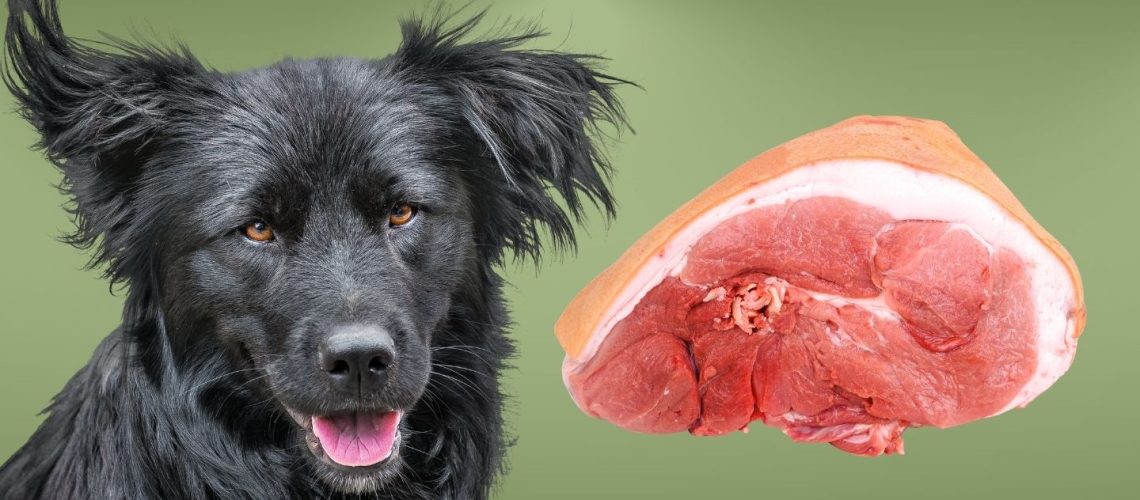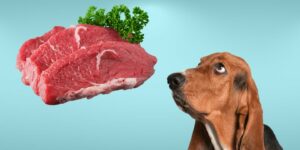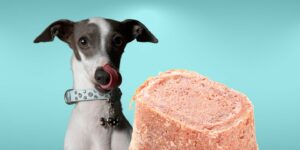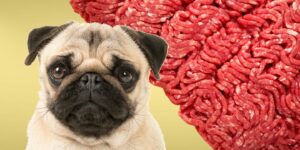Can dogs eat raw pork? The short answer is that, while it is not recommended, dogs can technically eat raw pork. However, there are several reasons why it is not a good idea to feed your dog raw pork, including the potential for food poisoning and the risk of contracting parasites. It is important to understand the risks and benefits associated with feeding raw pork to dogs and ensure that they have a balanced diet that meets their nutritional needs.
The Debate: Raw vs. Cooked Pork for Dogs
Arguments for feeding raw pork
Proponents of feeding dogs raw pork argue that it provides a natural, unprocessed food source that closely resembles their ancestral diet. They believe that dogs are well-equipped to handle raw meat and that cooking can destroy some of the nutrients present in the food.
Arguments against feeding raw pork
Opponents of feeding raw pork to dogs point out the potential health risks associated with consuming uncooked meat, primarily the presence of bacteria and parasites that can cause illness in dogs.
Expert opinions on the raw vs. cooked pork debate
Most veterinarians and canine nutrition experts recommend against feeding dogs raw pork due to the associated health risks. Cooked pork is a safer option because it kills any harmful bacteria or parasites that may be present in the meat.
The Dangers of Bacteria and Parasites in Raw Pork
Salmonella: symptoms and prevention
Salmonella is a type of bacteria commonly found in raw pork that can cause gastrointestinal illness in dogs. Symptoms include vomiting, diarrhea, fever, and loss of appetite. To prevent Salmonella infection, it is crucial to cook pork thoroughly before feeding it to your dog.
Trichinella: symptoms and prevention
Trichinella is a parasite sometimes found in raw pork that can cause fatigue, muscle pain, and difficulty breathing in dogs. Proper cooking of the pork can kill Trichinella and prevent infection.
Other potential parasites and bacteria found in raw pork
Raw pork may also contain other harmful bacteria and parasites, including E. coli, Campylobacter, and Toxoplasma gondii. As with Salmonella and Trichinella, proper cooking and handling practices can significantly reduce these risks.
The role of proper food handling and storage in preventing contamination
Proper food handling and storage are crucial in minimizing the risk of bacterial or parasite contamination in pork. This includes washing your hands and surfaces after handling raw pork and storing it correctly in the refrigerator or freezer.
The Nutritional Value of Pork for Dogs
The benefits of pork as a protein source
Pork is a good source of high-quality protein for dogs, which is essential for maintaining strong muscles, healthy skin, and a robust immune system.
The importance of lean cuts of pork
Lean cuts of pork have less fat than fattier cuts, which can contribute to a dog's overall health and prevent issues associated with obesity and high-fat diets.
Vitamins and minerals found in pork
Pork is a good source of essential vitamins and minerals for dogs, such as B vitamins, iron, zinc, and selenium.
Comparing pork to other protein sources for dogs
Pork is comparable to other protein sources, such as beef, chicken, and fish, in terms of its nutritional value. However, some dogs may have dietary preferences or allergies that make other protein sources more appropriate.
Safe Ways to Prepare and Serve Pork to Dogs
Cooking methods that kill bacteria and parasites
Thorough cooking of pork is crucial to kill any bacteria or parasites present. Methods like baking, boiling, or grilling can be used to ensure the pork is fully cooked and safe for consumption.
Avoiding added salt, spices, and other harmful ingredients
When preparing pork for your dog, avoid adding salt, spices, or other ingredients that could be harmful to their health. Stick to plain, cooked pork for a healthier option.
The role of bones in a dog's diet and the dangers of pork bones
While bones can provide some nutritional benefits, cooked pork bones should not be given to dogs, as they can splinter and cause choking or internal injuries. Raw bones also pose risks and should be avoided.
Alternatives to raw or cooked pork: commercially available dog food options
If you choose not to feed your dog raw or cooked pork, there are many commercially available dog food options that provide a balanced and nutritious diet, including pork-based dog foods.
Monitoring Your Dog's Health After Eating Pork
Signs of food poisoning or parasite infection in dogs
If your dog does consume raw pork, monitor them closely for signs of food poisoning or parasite infection, which may include vomiting, diarrhea, fever, or loss of appetite. Seek veterinary assistance if symptoms occur.
When to seek veterinary assistance
If your dog exhibits any signs of illness after eating pork, seek veterinary assistance promptly. Early intervention can help prevent complications and ensure your dog's health.
Long-term effects of a pork-heavy diet on a dog's health
Feeding your dog large amounts of pork can lead to health issues associated with high-fat diets, such as obesity and pancreatitis. To ensure your dog maintains a healthy weight and overall health, feed pork in moderation.
Conclusion
Feeding your dog raw pork is not recommended due to the potential risks associated with bacteria and parasite contamination. Cooked pork is a safer option and can be a nutritious part of a dog's diet when fed in moderation. As a responsible pet owner, it is crucial to make informed feeding choices and balance the risks and benefits of including pork in your dog's diet.











